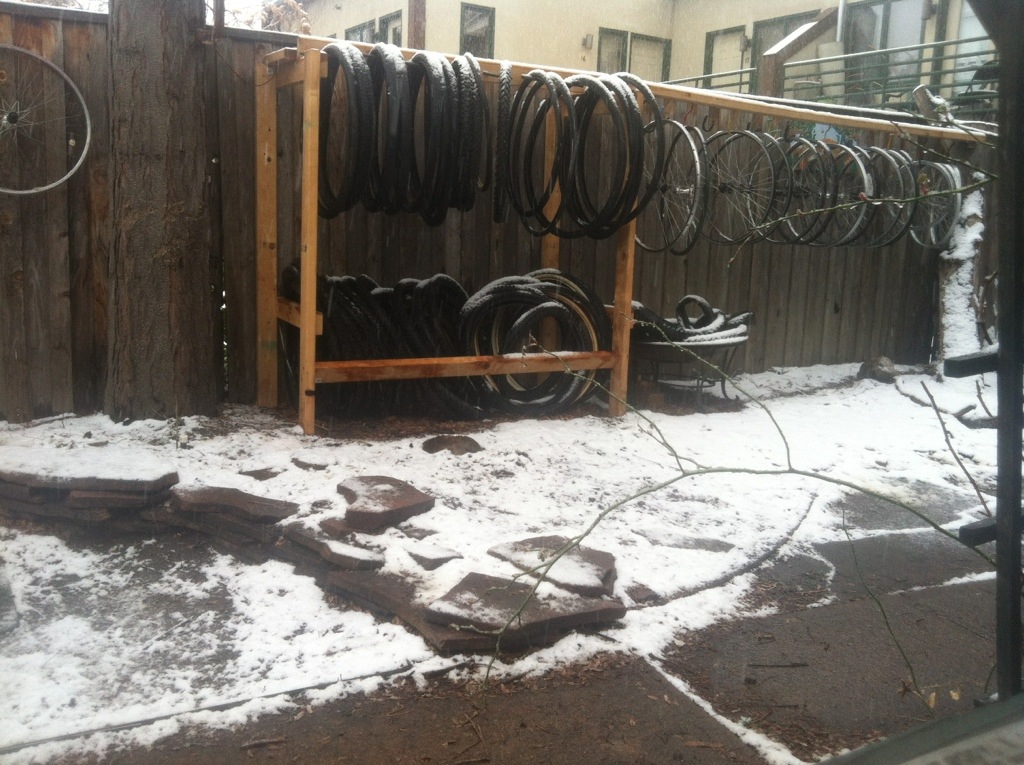Snow day:
Who rides their bike on snow days?
— Cyclocross riders, poor people with no car/rich people with no car and crazy people ride their bicycles on wet snow days.
Serious cyclists know how to cruise in snow.
Tip: Stay on top of your bike in an upright position.
Bad idea: Taking a corner fast in a diagonal position.
What do people do to accommodate the cold, and rough terrain of ice, lumpy snow and slush?
Traction to the ground is a top priority. Wider tires lend the rider more confidence and increased bike tire to road surface area.
Fixed gear riders use a lower gear to sail smoothly through awful roads. No need to go fast in these conditions. Stay upright and steady as you ride. The one-ness of a fixed gear promotes slow and stable.
Metal knobby tires: a good amount if cyclists choose metallic spikes for their winter bike. Metal screws in the tires break up ice and grip the road firmly. However, unless there is snow in the ground, these tires are loud, wear away with rub on the dry road and feel slick. It is not a good idea to roll with metal knobbies unless you have a separate snow bike or wheels. Keep in mind, that swapping wheel sets in the icy morning on your way to work is not easy or pleasurable. Those of us with the space or means have separate bikes because few people want to fuss with a wheel changeover in the cold.
The difference between metallic studs and wide mountain bike knobbies is not that much. For many people with a road and mountain bike, the simplest solution is to ride the mountain bike on snow days and the road bike on nice days.
A third way to approach the problem of seasonal changes affecting the efficiency and safety of riding is to have only one bike and build it accordingly as the seasons change. Trade-offs are inevitable in bikes. For instance, I choose 700x38c knobby tires for the winter. They are wide enough for chunky snow but not too slow for those Boulder winter days with clear roads.
I like to own one bike at a time.as the owner of a bike repair shop, the last thing I need is to be maintaining my fleet of bikes with a host of customer bikes waiting in line.
It will be darker in the winter. Choosing high powered front lights, a blinking red rear light, spoke lights, obeying traffic laws, staying on the wide array of Boulder bike paths and wearing reflectors contribute to increased safety with riding in the darkness. There is more riding at night in the winter with shorter days.
The ground is always hard. It is even harder in the cold. Wide tires and slow, steady riding are the two best tips for snow riding.
Staying warm: dress like a snowboarder/skier with boots, mittens, face covers, hat, scarf, and you will break a sweat on the ride. No one wants to freeze on a three mile ride to go dancing at the Avalon.
Similar blog post topic at Flatiron Bike



